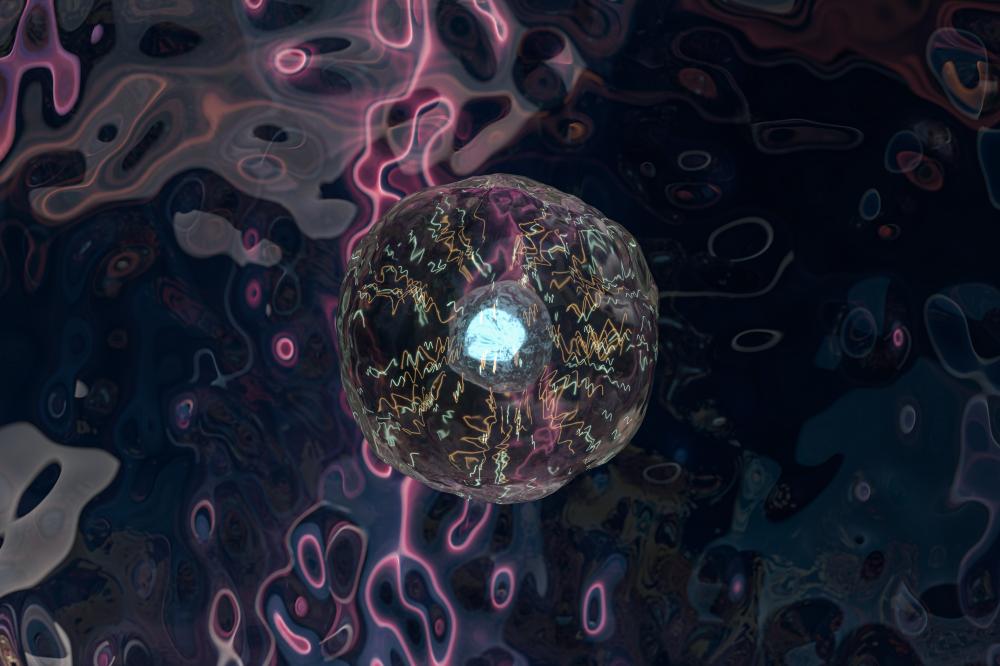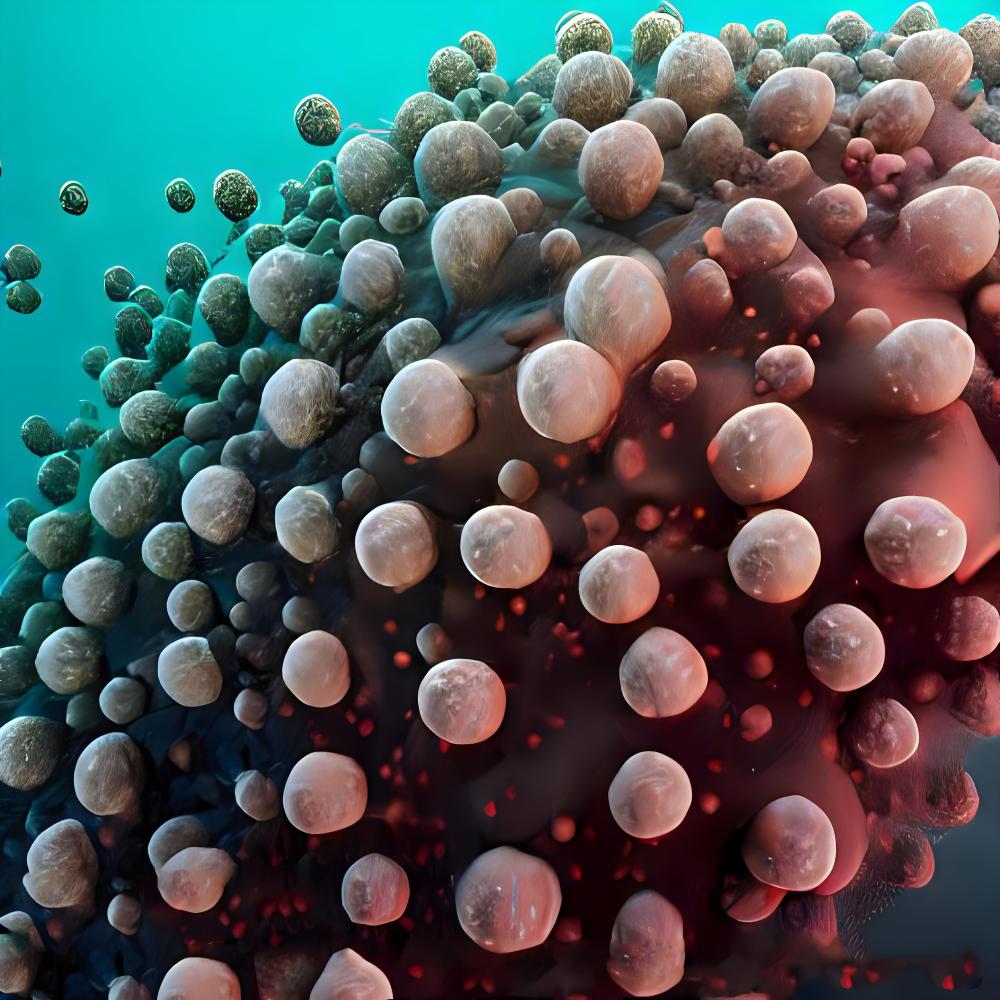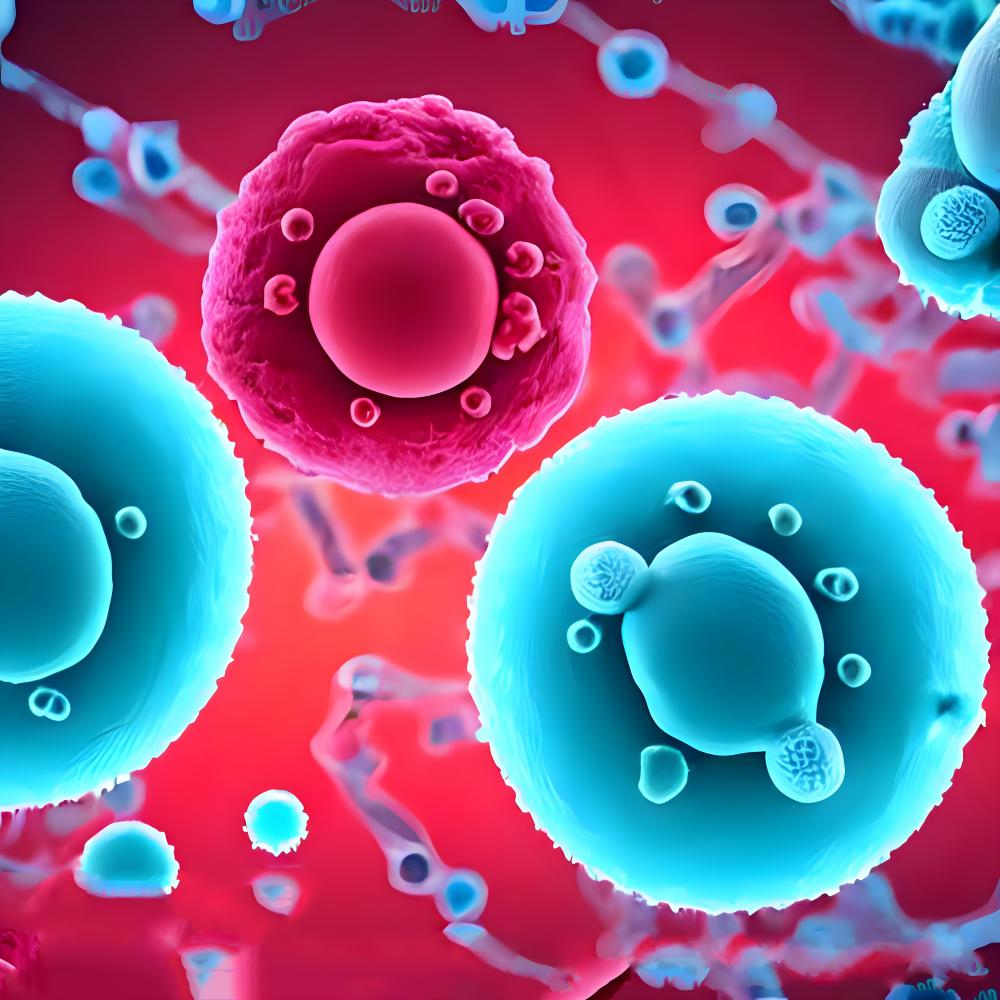Stem Cell Exosomes

The Exciting Potential of Stem Cell Exosomes
Stem Cell Exosomes, tiny vesicles secreted by stem cells, are emerging as a revolutionary component in regenerative medicine. As a seasoned professional with over two decades in the field, I've witnessed firsthand the exciting advancements stem cell therapies are making, especially in reducing biosafety concerns associated with traditional stem cell transplants. Stem Cell Exosomes offer a promising alternative, capable of delivering therapeutic benefits with reduced risk.
How Do Stem Cell Exosomes Compare to Traditional Stem Cell Treatments?
The comparison between Stem Cell Exosomes and traditional stem cell therapy is a fascinating topic. Unlike conventional therapies that involve the transplantation of whole cells, exosomes allow for targeted delivery of specific cell signals without the cellular baggage. This reduces the risk of immune rejection and simplifies regulatory hurdles. While stem cell therapy involves complex logistics in cell engraftment and differentiation, exosomes facilitate delivery through simpler application methods, enhancing their appeal for clinical applications.
Despite their potential, challenges remain. Large-scale manufacturing, purification, and ensuring batch consistency are hurdles that the industry continues to grapple with. However, the ease of storage and transport makes these challenges worth overcoming. In my experience, exosomes could drastically transform our approach to diseases like neurodegenerative disorders and cardiovascular diseases.
Exploring the Benefits and Challenges of Stem Cell Exosomes
Among the remarkable advantages of Stem Cell Exosomes are their roles in angiogenesis, anti-inflammation, and immune modulation. These tiny vesicles are like biological messengers, enabling communication between cells that can initiate healing and repair processes. One of my patients, a professional athlete, experienced a notable reduction in joint inflammation and quicker recovery times following exosome treatment. Such cases highlight the broader potential of exosomes for promoting healing and reducing recovery times.
The challenges lie in understanding their complex cargo, which includes proteins, lipids, and RNA molecules. Each component can influence biological processes differently. As researchers continue to decode these intricacies, they pave the way for more precise treatments. Addressing these challenges could lead to substantial advancements in personalized medicine, where treatments are tailored to individual patient needs.
What Are the Concerns Around Stem Cell Exosomes?
While Stem Cell Exosomes hold promise, concerns about their standardization and safety remain prevalent. Key worries include the potential for unregulated use and the consistency of exosomes derived from different stem cell sources. To address these, regulatory bodies are implementing strict guidelines to ensure safety and efficacy. As someone deeply embedded in this industry, I assure that adherence to regulatory standards is pivotal for the continued success and acceptance of exosome therapies.
Our clinic at Bioxcellerator meticulously follows these guidelines, ensuring that each batch of exosomes is consistent and derived from ethically sourced stem cells. By doing so, we not only advance the science but also build trust with patients who look to these therapies for hope and healing.
- Consistency in production
- Ethical sourcing
- Regulatory compliance
Innovative Approaches to Harnessing Stem Cell Exosomes
Advancements in the application of Stem Cell Exosomes are captivating. For instance, exosomes are now being explored for delivering mRNA vaccines, a technique showing superior results compared to traditional liposomes. This innovative approach could revolutionize not only regenerative medicine but also immunotherapy and vaccination strategies.
At Bioxcellerator, we harness these advancements in diverse therapeutic areas. From anti-aging treatments to addressing chronic pain, our methods emphasize the potency of Stem Cell Exosomes. An example of this is our stem cell exosome therapy for hair restoration, where patients have reported improved hair density and vitality.
Employing such cutting-edge solutions requires a multidisciplinary approach and a commitment to continuous learning. This dedication is what sets pioneering clinics apart in the ever-evolving landscape of stem cell research and application.
Is the Future Bright for Stem Cell Exosomes?
Stem Cell Exosomes are at the frontier of medical innovation. Their use across various domains, from regenerative medicine to drug delivery, signals a transformative potential that could redefine conventional treatment paradigms. As research and technology advance, I foresee a future where exosomes will play a critical role in personalized and preventive medicine.
These expectations are supported by ongoing clinical trials and emerging studies, which consistently underscore the efficacy of exosomes in treating conditions once deemed untreatable. We stand on the precipice of a new era in therapy and treatment, where Stem Cell Exosomes are not just a hopeful prospect but a tangible reality set to change lives.

An Overview of Exosomes Stem Cells
What Sets Exosomes Apart from Stem Cells?
Innovative Approaches to Exosomes Stem Cells
- Initial consultation and diagnostic testing
- Customized treatment planning
- Precise delivery of exosomes via targeted injections
- Ongoing follow-up and support
Who Can Benefit from Exosome Therapy?
What Does the Future Hold for Exosomes in Medicine?
Exosomes Vs Stem Cells: An Overview
In the sphere of regenerative medicine, Exosomes Vs Stem Cells is a prevalent discussion. While both these components offer impressive potential in therapeutic applications, they operate through distinct mechanisms. Understanding the nuances of each can shed light on their unique advantages.
Stem cells are renowned for their ability to differentiate into various cell types, making them pivotal in treatments targeting tissue regeneration. They are used in therapies for conditions like spinal cord injuries, arthritis, and more. On the other hand, exosomes, which are small extracellular vesicles, act as communication vehicles carrying proteins and genetic material to facilitate healing.
Many in the medical community, including experienced professionals at Bioxcellerator, lean towards a hybrid approach. This involves leveraging the regenerative potential of both exosomes and stem cells to optimize healing processes. Such synergies might pave the way for groundbreaking advancements in regenerative therapies.
The Benefits of Exosomes and Stem Cells
One of the primary benefits of stem cells is their ability to self-renew and transform into a variety of other cell types. This characteristic is critical for anti-aging and regenerative therapies--a field where my professional experiences at Bioxcellerator have been profoundly rewarding. For clients with degenerative conditions, stem cell injections can drastically improve quality of life.
Exosomes, due to their smaller size, present a promising alternative with fewer complications. They excel in reducing the risk of immune rejection and tumorigenesis, concerns that sometimes arise with stem cell transplants. These vesicles are also easier to store and transport, enhancing their practicality. In my two decades at Bioxcellerator, I have witnessed the transformative impact of combining exosome therapy with traditional methods.
Additionally, exosomes can be engineered to carry therapeutic agents, acting as specialized delivery systems. Their versatility means they can target specific cells or tissues with precision, which often results in improved efficacy in treatment outcomes. This innovation has been instrumental in our hair restoration therapies.
Why Choose Exosomes Vs Stem Cells?
For many, the choice between Exosomes Vs Stem Cells hinges on specific treatment goals and patient conditions. At Bioxcellerator, we often assess individual needs to determine the optimal approach. It's not an easy choice, but one that can significantly influence therapeutic results.
Consider patients seeking non-invasive options. Exosomes can provide a cell-free therapy that minimizes potential side effects. Their non-replicative nature circumvents the risk of unwanted cell growth, a critical consideration for those wary of tumors. In many instances, opting for exosome therapy can lead to successful outcomes without the complications associated with cell-based treatments.
For those looking for long-term regeneration, stem cell therapy remains a viable choice. It offers sustained cell replacement and repair, a necessity for chronic conditions like osteoarthritis. By continuously evaluating the balance between these two therapies, we at Bioxcellerator ensure that our clients receive the best possible care tailored to their unique circumstances.
The decision-making process involves evaluating factors such as clinical evidence, patient health status, and desired outcomes. This methodical approach has been refined through years of professional experience and remains at the heart of our treatment philosophy.
What Do Exosomes and Stem Cells Have in Common?
While Exosomes Vs Stem Cells highlights their differences, it's vital to recognize their shared contributions to regenerative medicine. Both are pivotal in promoting healing and recovery, albeit through different pathways. Their capacity to enhance communication within the body is unparalleled.
Both exosomes and stem cells stimulate cellular repair and regeneration. They play a crucial role in restoring function to damaged tissues, making them invaluable in the field of regenerative therapies. In my time at Bioxcellerator, integrating these treatments has shown remarkable improvements in patient outcomes.
An important aspect to consider is their potential to revolutionize treatments for a wide range of conditions, from orthopedic injuries to neurodegenerative diseases. By harnessing their collective strengths, we open new pathways to healing that are both efficient and effective.

What is the potential of Stem Cell Exosomes in regenerative medicine?
Stem Cell Exosomes are fascinating micro-vesicles secreted by stem cells, playing a pivotal role in cell communication and repair processes. Their potential in regenerative medicine is vast due to their ability to transfer bioactive molecules, such as proteins and RNA, directly to target cells, promoting healing and tissue regeneration. Unlike traditional stem cell therapies, exosomes offer a more targeted and less invasive approach, reducing the risk of immune rejection. Research from Nature highlights their applicability in treating conditions like neurodegenerative and cardiovascular diseases, suggesting they may revolutionize the way we approach such chronic ailments. Imagine a world where recovery timelines shorten, and less invasive procedures become the norm. As a practitioner, I've seen firsthand the incredible impacts exosomes can have on patient recovery and wellness, offering hope for more personalized treatment options in the future.
What are some common concerns surrounding Stem Cell Exosomes?
Concerns about Stem Cell Exosomes often revolve around consistency and safety. Given their complex biological makeup, standardizing exosome therapies is challenging, leading to potential variances in treatment outcomes. The Journal of Cell Biology reported on the importance of ensuring that exosomes from different stem cell sources maintain uniformity to avoid unforeseen complications. As a clinician, I've always emphasized adhering to rigorous safety and ethical standards, ensuring that each batch of exosomes is consistent and derived from ethically-sourced cells. Fortunately, regulatory bodies are increasingly setting guidelines to mitigate these concerns, promoting the safe integration of exosome therapies in clinical practice. If you're considering such treatments, it's crucial to engage with practitioners who prioritize compliance with these standards.
What are the benefits of using Stem Cell Exosomes over traditional stem cell therapy?
Stem Cell Exosomes provide several advantages over traditional therapies, primarily due to their cell-free nature. They reduce the risks associated with cellular transplantation, such as immune rejection or tumorigenesis. As highlighted in recent studies, these exosomes can be engineered to carry therapeutic agents, allowing for precise targeting and minimal side effects. Picture a scenario where a patient with arthritis receives exosome therapy, leading to significant pain relief and improved joint function, all while avoiding the complexities of whole-cell transplants. Their smaller size also facilitates easier storage and transport, making them more accessible for widespread clinical use. In my experience, incorporating exosomes into treatment plans has led to notable improvements in patient outcomes, particularly for those hesitant about conventional cell-based therapies. Have these benefits changed your perspective on regenerative treatments?
How are innovations in Stem Cell Exosome therapy advancing?
Innovations in Stem Cell Exosome therapy are progressing rapidly, with new applications emerging across various medical fields. For instance, exosomes are being explored for improved vaccine delivery systems, as noted in a study from Nature, offering insights into their versatility. This is a testimony to their potential beyond traditional regenerative medicine, with implications for immunotherapy and cancer treatments. At Bioxcellerator, we've developed innovative exosome-based therapies for conditions like back pain and hair restoration, where patients report enhanced outcomes compared to conventional methods. It's an exciting time for exosome research, as these advancements promise to extend the benefits of regenerative medicine to a broader audience, enhancing healthcare delivery worldwide. How do you see these innovations impacting your understanding of medical treatments?
How do Exosomes Stem Cells differ from traditional stem cell therapies?
Exosomes Stem Cells differ from traditional stem cell therapies in their approach to delivering therapeutic benefits. While stem cells involve the transplantation of living cells capable of differentiating into various tissues, exosomes serve as the communication tools these cells use to influence healing processes. According to recent findings, exosomes can carry crucial biomolecules like RNA and proteins, enhancing their ability to target and repair damaged tissues. This cell-free mechanism reduces risks associated with stem cell transplants, such as immune responses and potential tumor formation. Clinically, this distinction allows for more targeted treatment options, particularly for patients who may not tolerate conventional stem cell therapies well. If you're evaluating treatment options, understanding this fundamental difference can be pivotal in making an informed decision.
What factors should be considered when choosing between Exosomes and Stem Cells?
Choosing between Exosomes and Stem Cells involves considering your specific treatment goals and medical history. Each offers unique advantages: while stem cells provide sustained tissue regeneration due to their ability to differentiate into various cell types, exosomes offer targeted healing with minimal risks associated with cell-based treatments. Recent discussions from Celltex emphasize evaluating the patient's condition and desired outcomes when opting for one over the other. For instance, a patient with chronic back pain might benefit more from exosomes due to their non-replicative nature, minimizing complications. Conversely, individuals needing long-term regeneration might lean towards stem cell therapies. At Bioxcellerator, we tailor treatments to each client's needs, ensuring they receive the best possible care based on the latest research and clinical evidence. What's your primary consideration when exploring these options?
What do Exosomes and Stem Cells have in common?
Exosomes and Stem Cells, despite their differences, share a common goal in regenerative medicine: promoting healing and recovery. Both contribute to restoring damaged tissues and enhancing cellular communication, thus playing pivotal roles in therapy for conditions like orthopedic injuries or neurodegenerative diseases. An article in the Stanford news center highlights their synergy in improving patient outcomes, particularly when integrated into treatment plans. At Bioxcellerator, we've witnessed remarkable results by combining these therapies, offering patients a nuanced approach that leverages the strengths of both. Understanding their shared purpose can guide you in recognizing their potential impact on personal healing journeys. How might this shared capability influence your decision on which therapy to pursue?
What does the future hold for Exosomes in medicine?
The future for Exosomes in medicine is incredibly promising, with ongoing research exploring their application in chronic pain relief, aesthetic improvements, and targeted drug delivery. As detailed in a comprehensive review, integrating exosomes with advanced technologies, such as AI and genetic engineering, could refine therapeutic strategies further. At Bioxcellerator, we continuously innovate and adapt to these advances, ensuring our clients benefit from the latest breakthroughs in regenerative treatments. The potential of exosomes to transform conventional procedures into targeted, non-invasive solutions is vast, heralding a new era in personalized healthcare. As we look toward this future, what are your expectations for the integration of cutting-edge therapies into everyday medical practices?
Resources
- National Institutes of Health (NIH) - The NIH is the primary agency for conducting and supporting medical research in the United States.
- U.S. Food and Drug Administration (FDA) - The FDA is responsible for protecting and promoting public health through the regulation and supervision of various products, including stem cell therapies.
- California Institute for Regenerative Medicine (CIRM) - CIRM funds stem cell research in California with a focus on accelerating treatments and cures for various diseases.
- Centers for Disease Control and Prevention (CDC) - The CDC is a leading national public health institute in the United States.
- Nature - Nature is a multidisciplinary scientific journal publishing research in various fields, including regenerative medicine and stem cell research.






























